This was published 6 years ago
Neuschwanstein Castle, Germany: The castle that bewitched Walt Disney
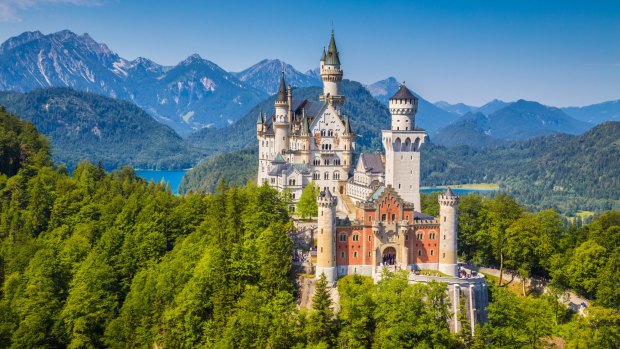
It is worth taking a step inside the Neuschwanstein Castle to fully appreciate this fairytale palace built for King Ludwig II in south-west Bavaria, Germany. Credit: iStock
Snow white, with silver flourishes, it crowns a hill, hedged by thickets of birch, beech and pine trees and dwarfed by a backdrop of snow-crowned mountains. There are beautiful castles all over the world but, with its whimsical turrets and idyllic alpine setting, surely none can beat this.
The most iconic of Bavarian King Ludwig II's fanciful abodes, Neuschwanstein Castle has bewitched travellers since it sprouted in the late 19th century, not least Walt Disney, who used it as the model for his Sleeping Beauty castle.
An enticing day trip from Munich, it's also a highlight of the "Romantic Road", a 350-kilometre touring route that threads through the picture-perfect medieval towns, forests and alps of southern Germany (devised in the 1950s, it proved a popular adventure for American troops and their families stationed here after World War II).
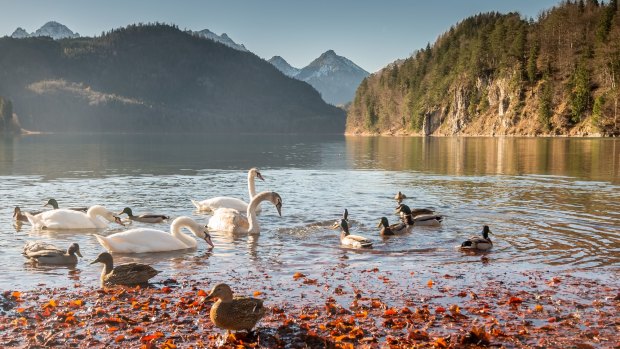
Swans and teal wild ducks swim in Hohenschwangau lake.Credit: iStock
Many tourists are content to gaze at Neuschwanstein from afar, and browse the souvenir shop postcards that reveal its beauty through the seasons (in winter, the surrounding landscapes ooze a frosty magic, while in autumn, they're ablaze with flaming colours). But to fully appreciate this fairytale castle, and the enigmatic personality of Ludwig II, who was "mad" to many, a "romantic visionary" to others, you must head inside. Easier said than done, however. Perched atop a craggy outcrop, it's a fair schlep from the visitor centre (where you buy a ticket with a set admission time). It takes us almost half-hour to huff and puff our way up the castle's tree-fringed path (you can hop in a shuttle bus or a horse-drawn carriage part of the way, but must do the last sloping section on foot). We've barely caught our breath back when we're ushered inside the limestone-clad complex and up a spiral stone staircase – the first of several on our guided tour of this maze-like palace, which the reclusive young king had purpose-built over the ruins of an old medieval castle.
I feel a bit dizzy when I reach the top, though it's hard to say if this is because of the ascent, or what greets us (a corridor whose Arabesque vaulted ceilings hint at the kitsch to come). While it was fitted with mod-cons – such as running water, central heating and telephones – the castle was envisaged as a throwback to the Middle Ages (or at least an idealised vision of that era). And the mish-mash decor evokes Ludwig's great passions: nature, medieval literature and mythology, and the dramatic operas of Richard Wagner (to whom he was a friend and patron). We pass walls sporting murals of damsels in distress, fearsome dragons and heroes riding on horseback, and nose a selection of lavish rooms, including his sleeping quarters, whose richly-carved oak furniture apparently took 14 carpenters four years to craft.
Ludwig, we're told, had a thing about swans and they're everywhere – in the woven silk curtains, porcelain ornaments and silver bedroom sink, with the faucet shaped like a swan's neck. Sometimes labelled the Swan King, Ludwig closely identified with the Swan Knight, a tragic lonely character in a Wagnerian opera; and the castle, which translates to New Swan Stone Castle, is located in the Schwangau or Swan Valley. Another decadent space is the Throne Room. Designed like a gaudy chapel, it has a mosaic floor etched with plants and animals, Carrara marble steps and pillars, images of Jesus and the apostles, and a cupola festooned with stars. Strikingly, there's no throne – it was never installed as Ludwig died, in 1886, before the castle could be completed. He was found drowned in a lake near Munich, three days after royal commissioners declared him mentally unfit to rule, bringing to an end his 22-year reign (his mysterious death, aged 40, was officially suicide, but some suspect foul play).
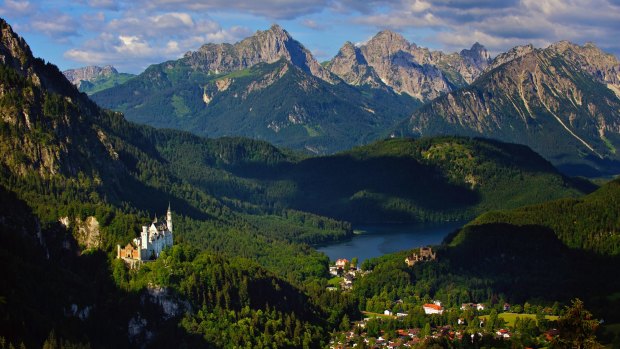
Neuschwanstein Castle: Is there a better view on earth?
Seven weeks later Neuschwanstein was unveiled to the paying public and, although only a dozen or so of its 200-plus rooms were ever finished, it remains one of Germany's most-visited attractions (with crowds peaking between July and October). From the castle's giant windows and breezy balconies, you can jostle for sweeping alpine panoramas, but for the best view of Neuschwanstein itself, hike 10 minutes up from the castle to the Maria Bridge (which spans a gorge and is named after Ludwig's mother). Also open to the public – situated closer to the visitor centre – is the custard-toned Hohenschwangau Castle, where Ludwig grew up, and monitored the evolution of his dream castle/escapist fantasy through a telescope. Nestled beneath, by a gorgeous lake, the sleek Museum of the Bavarian Kings is also worth a look, especially for its 3D multimedia displays of Ludwig's pet projects. While some were realised, others never saw the light of day, notably a cable car, powered by steam engines and decorated like a gilded peacock, that would have transported him between castles. Later, strolling by the tranquil lake, pondering whether Ludwig was indeed mad or misunderstood (a man out of his time, perhaps), I try to picture this quirky cable car when something catches my eye: it's a solitary white swan, mooching gracefully by the water.
TRIP NOTES
MORE
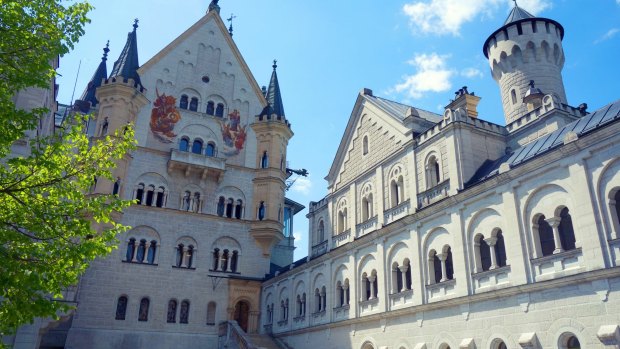
Neuschwanstein Castle was commissioned by Ludwig II of Bavaria.Credit: iStock
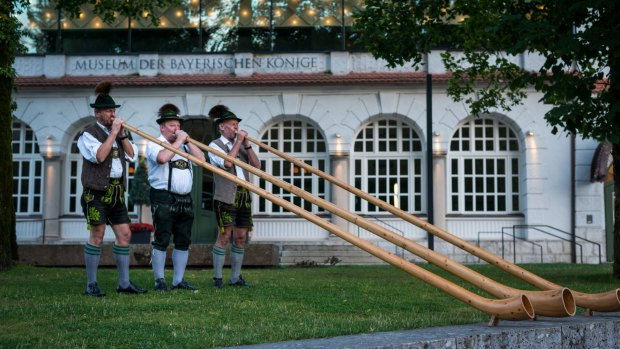
Bavarian musicians playing their Alphorns in front of the Alpsee.Credit: iStock
FLY
Qantas and Emirates fly to Munich from Sydney and Melbourne via Dubai
TOUR
Collette's 11-Day Romantic Road and Fairy Tale Road tour includes a visit to Neuschwanstein Castle. Tours priced from $3329; gocollette.com
Steve McKenna was a guest of Collette
Sign up for the Traveller Deals newsletter
Get exclusive travel deals delivered straight to your inbox. Sign up now.